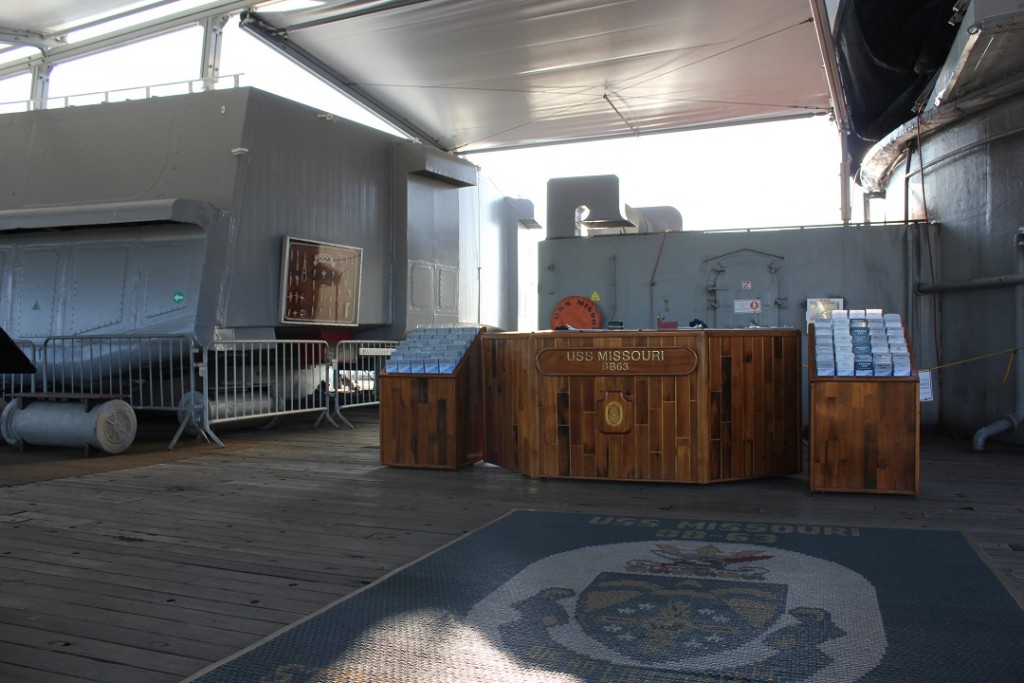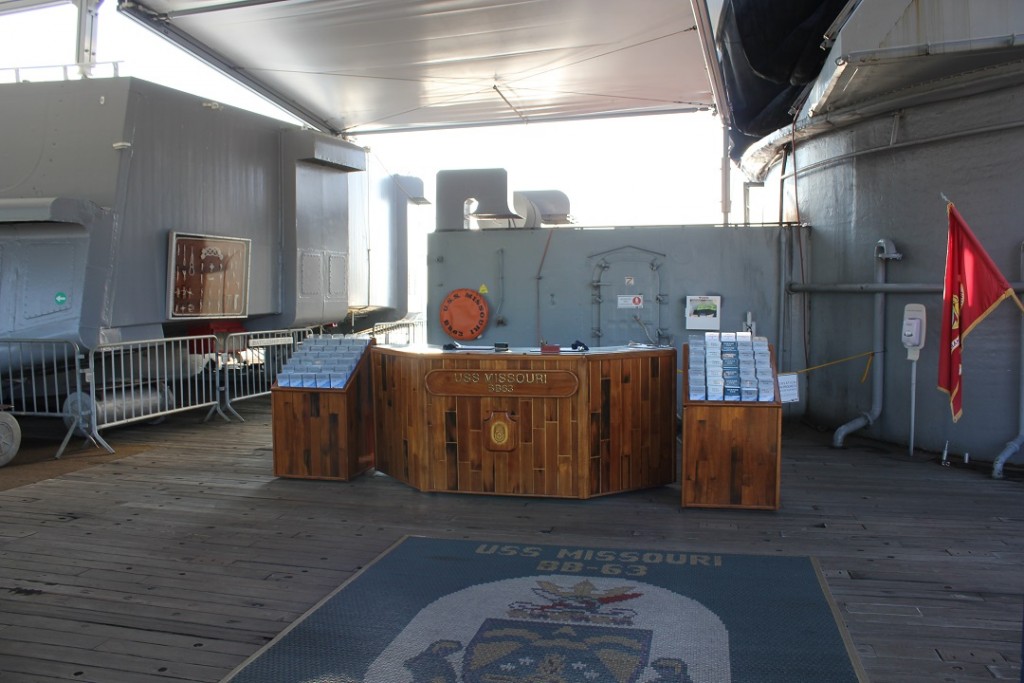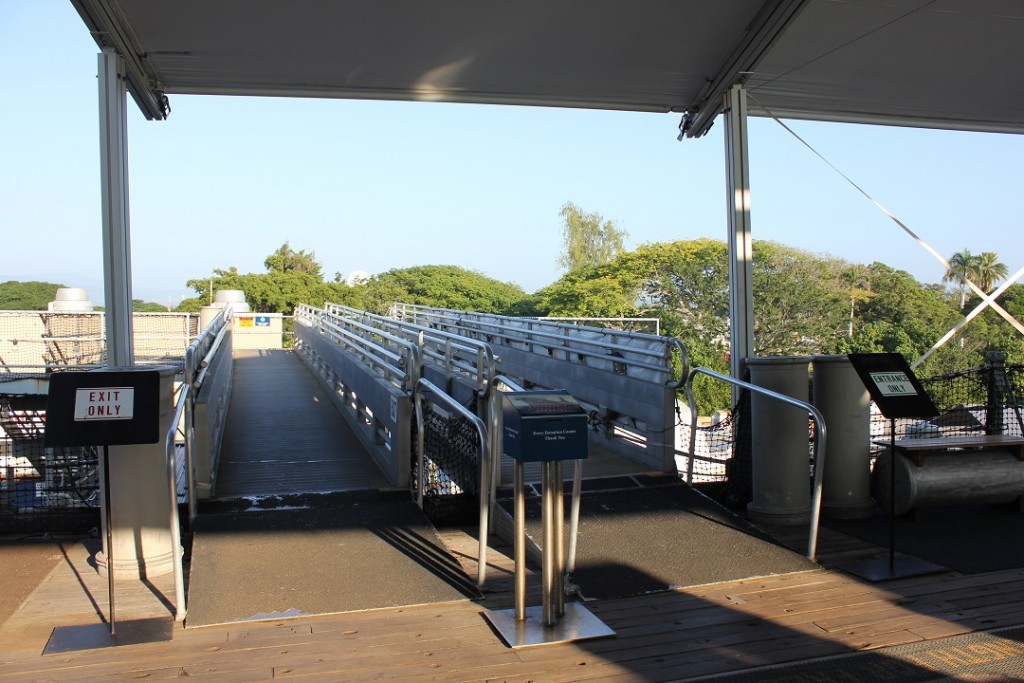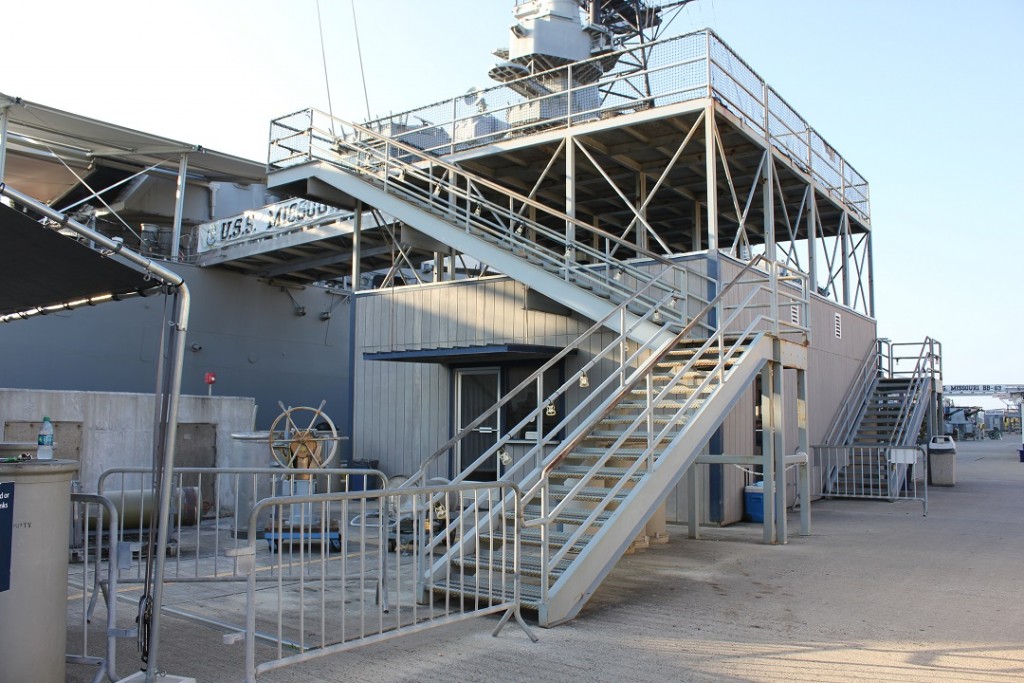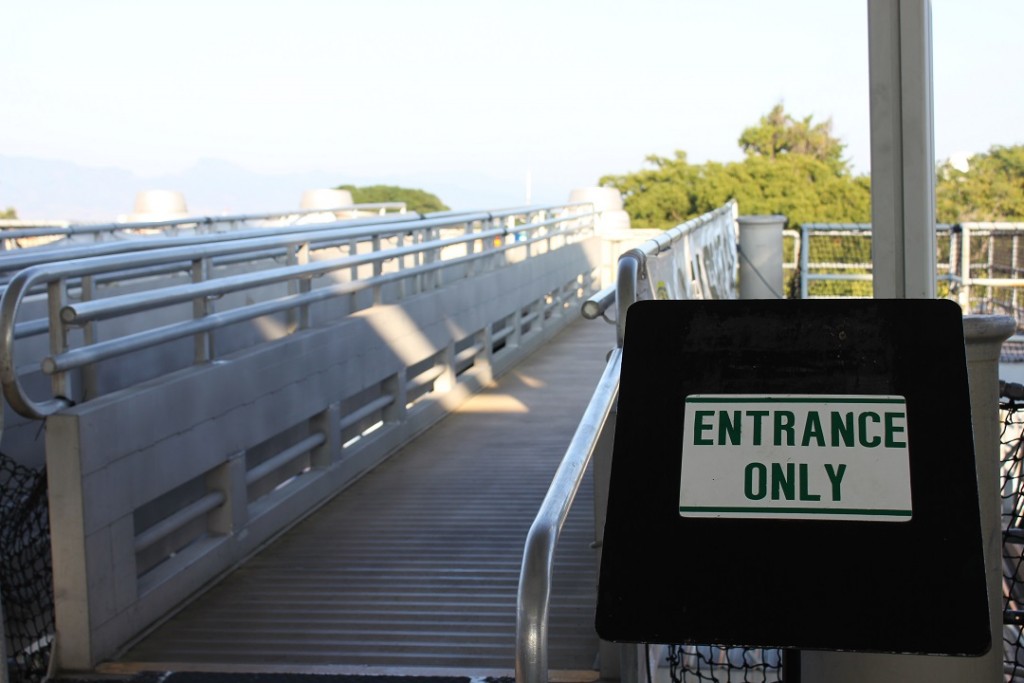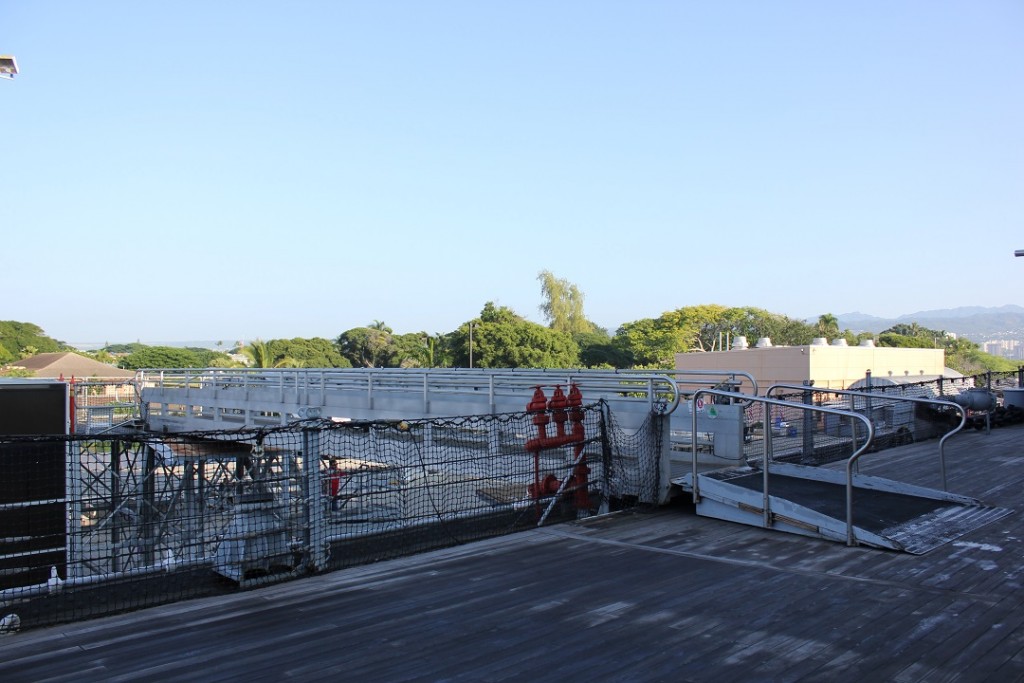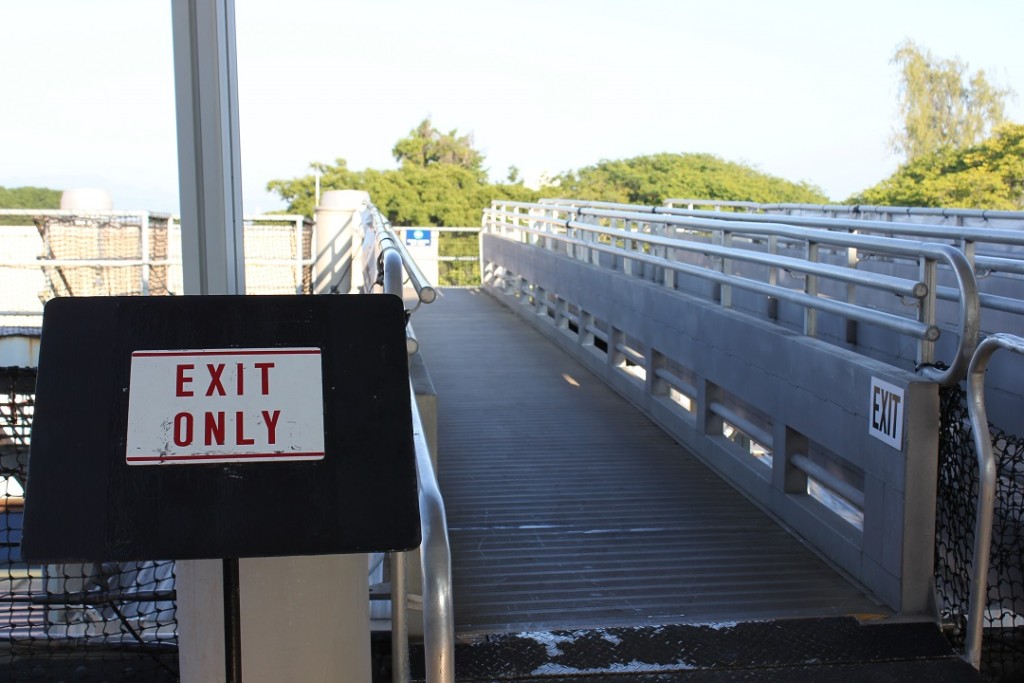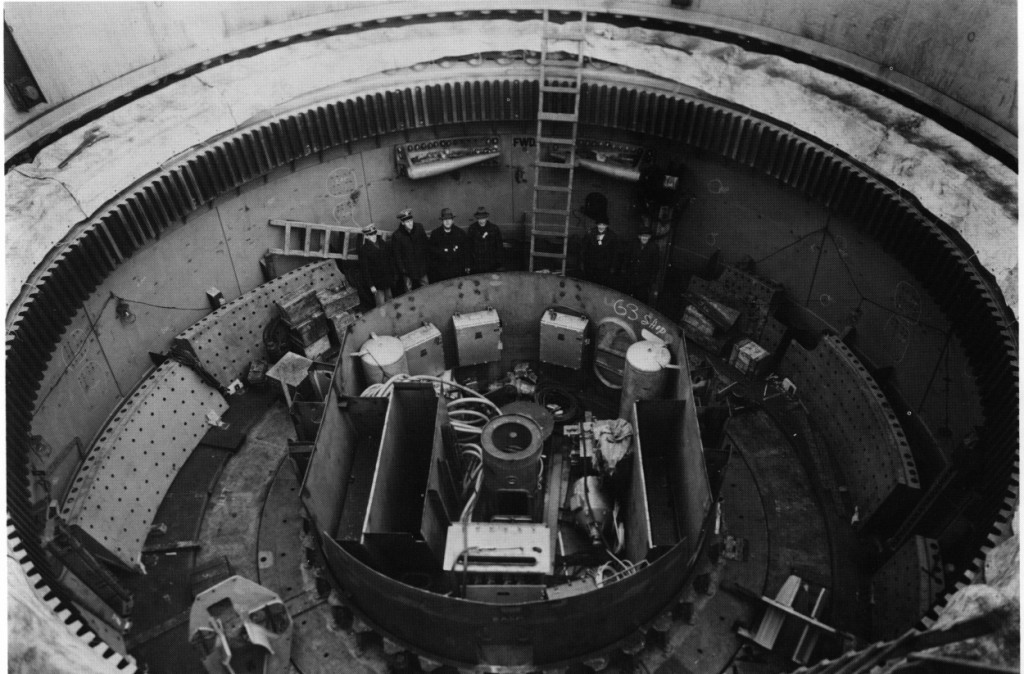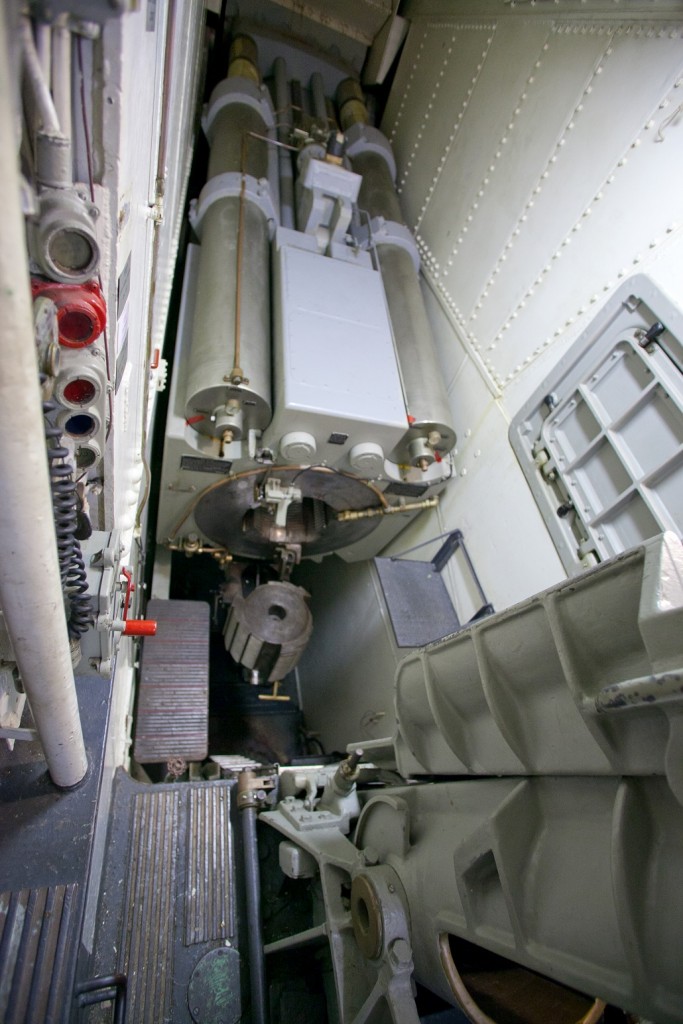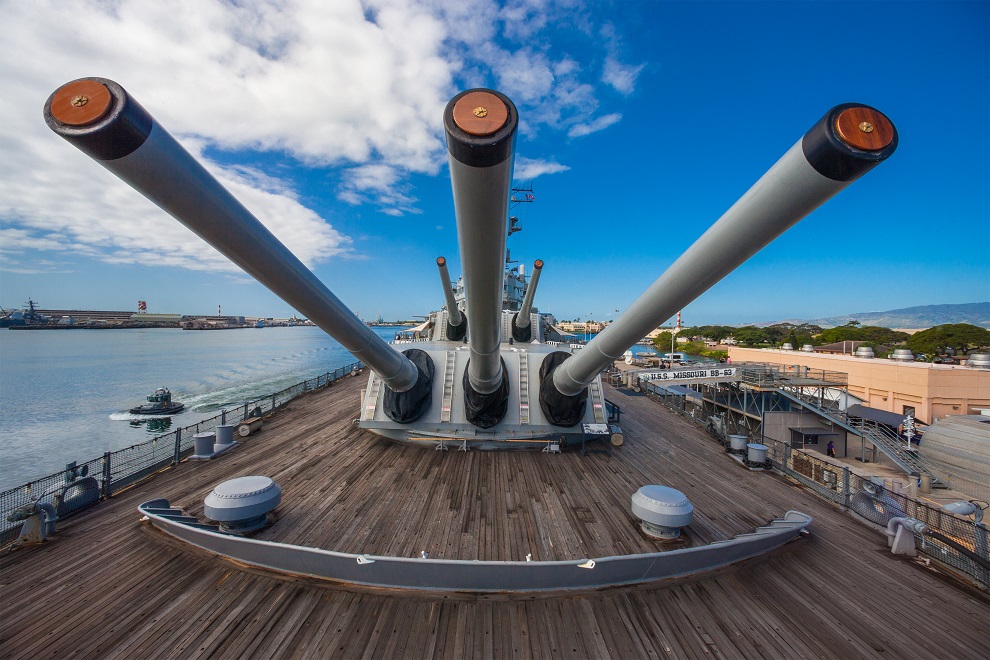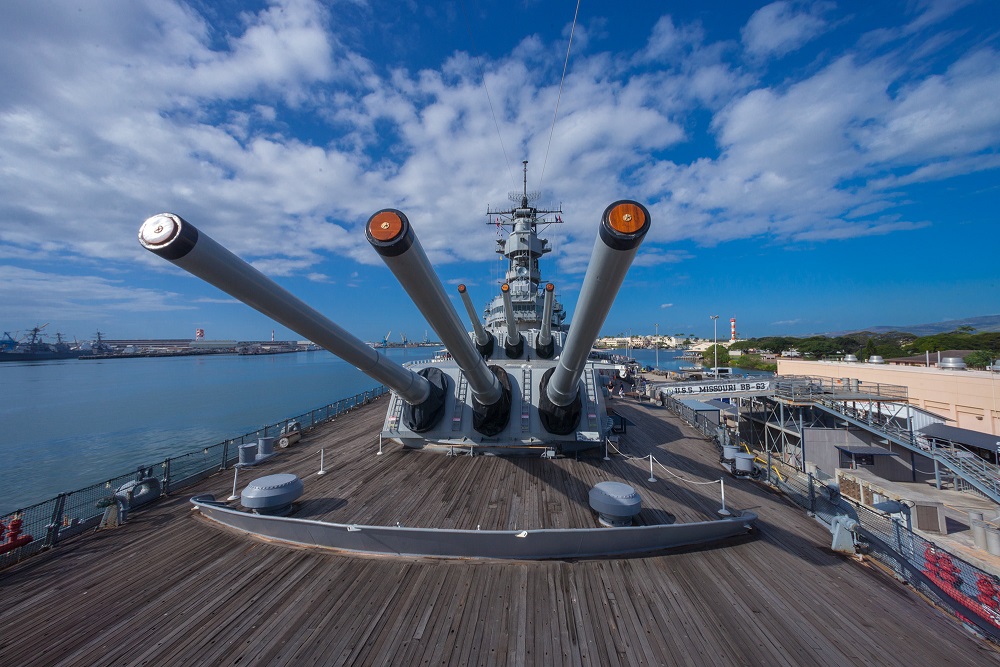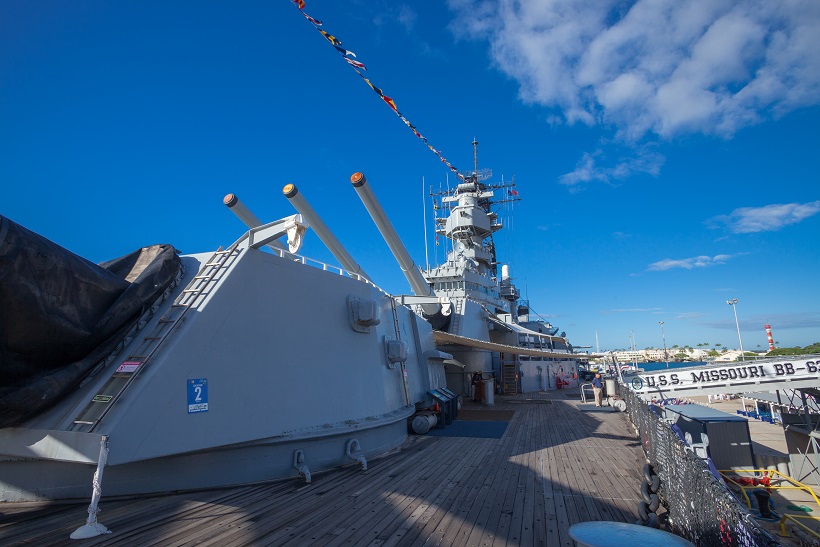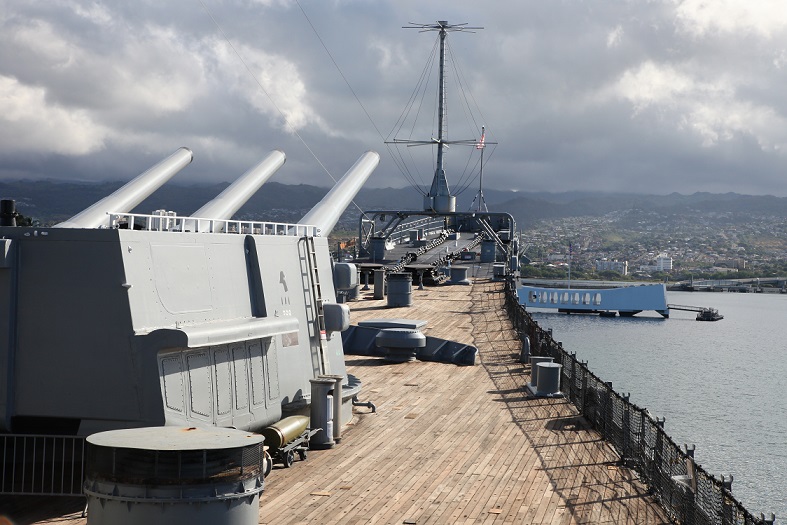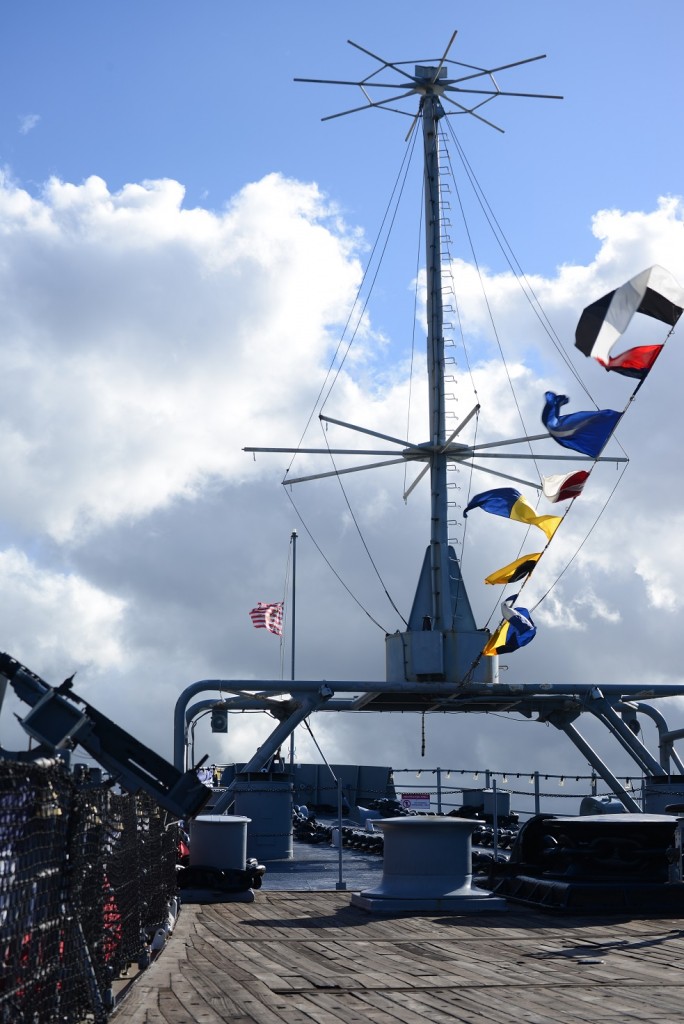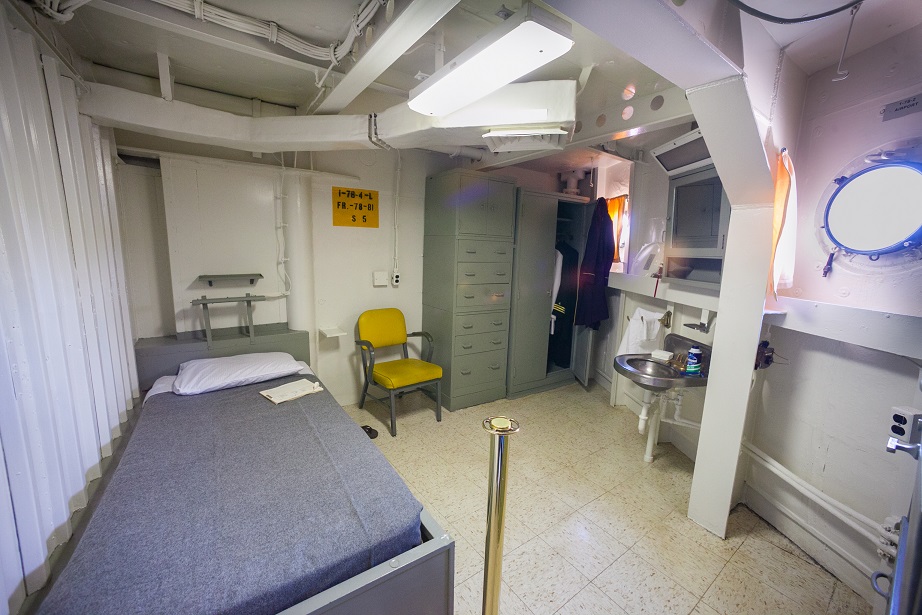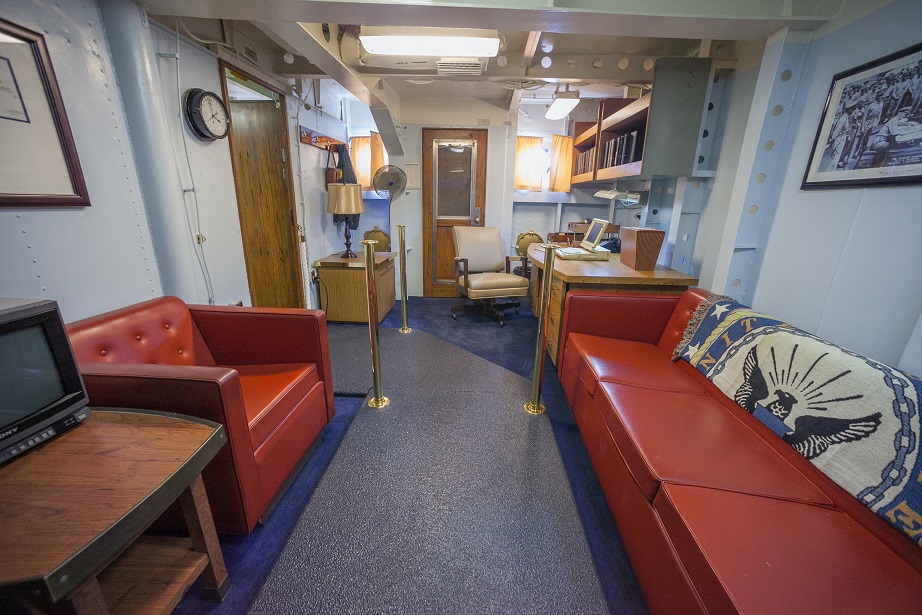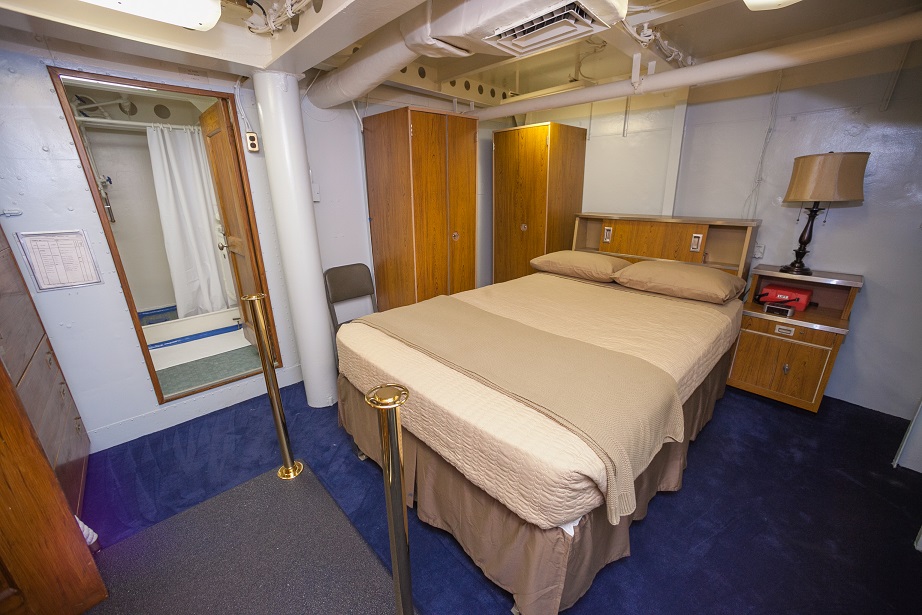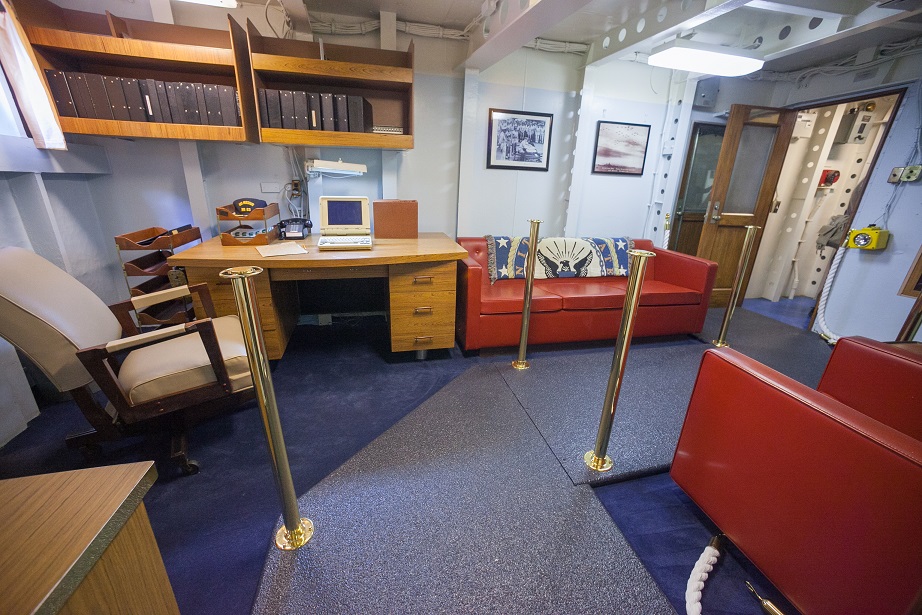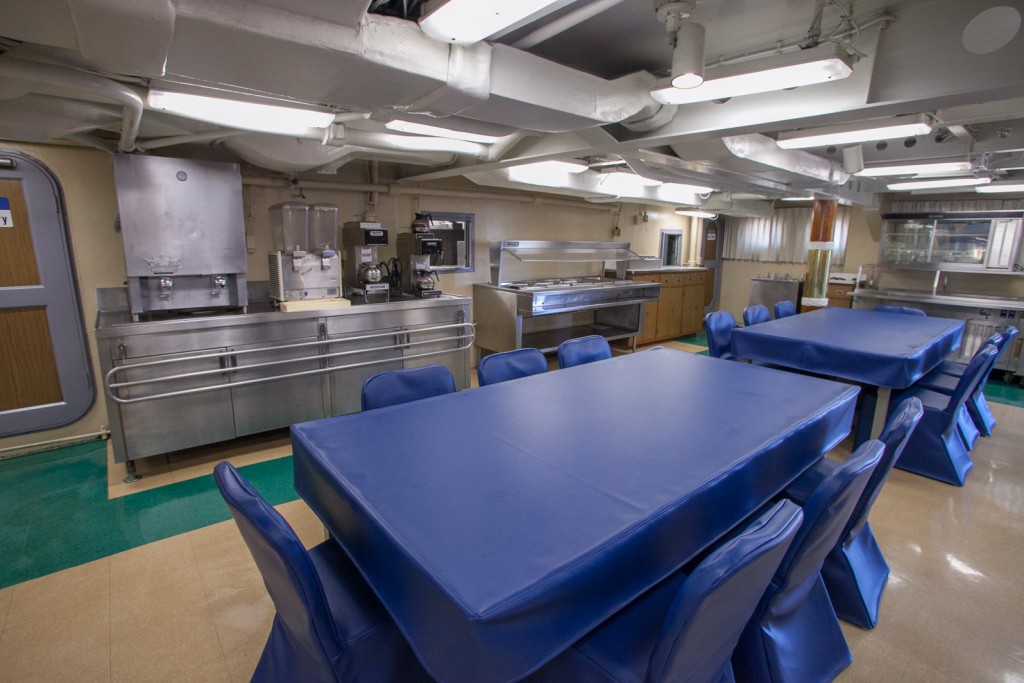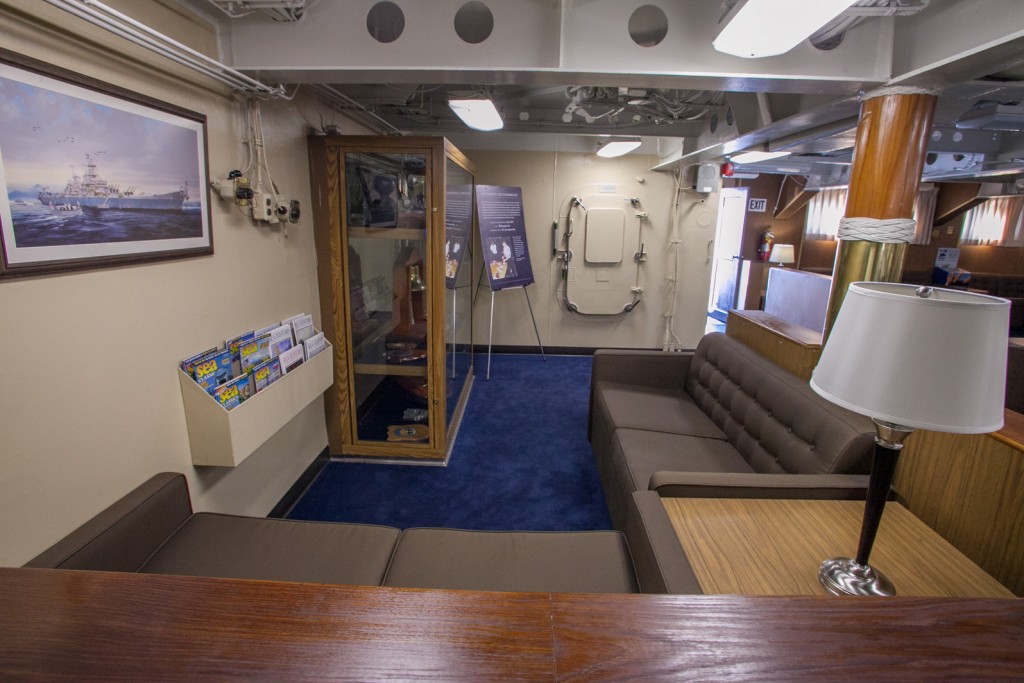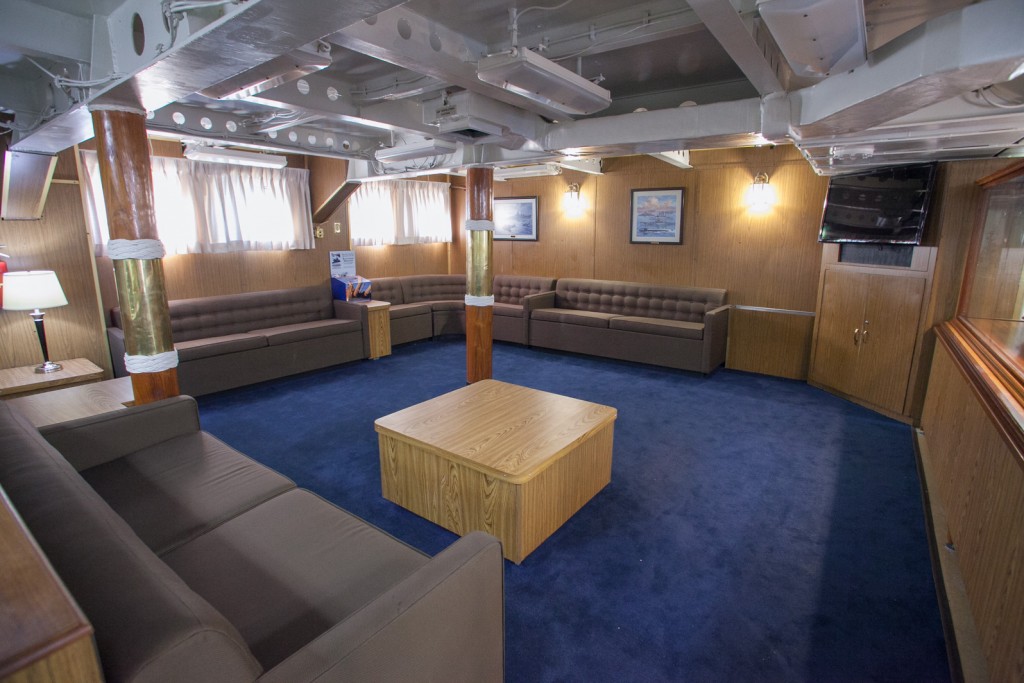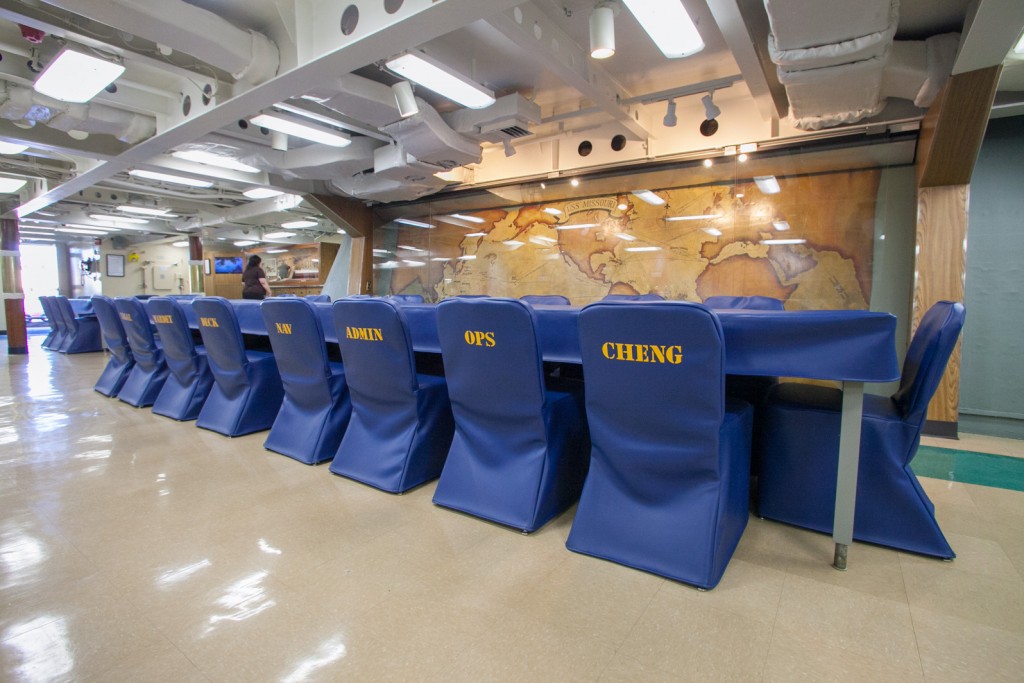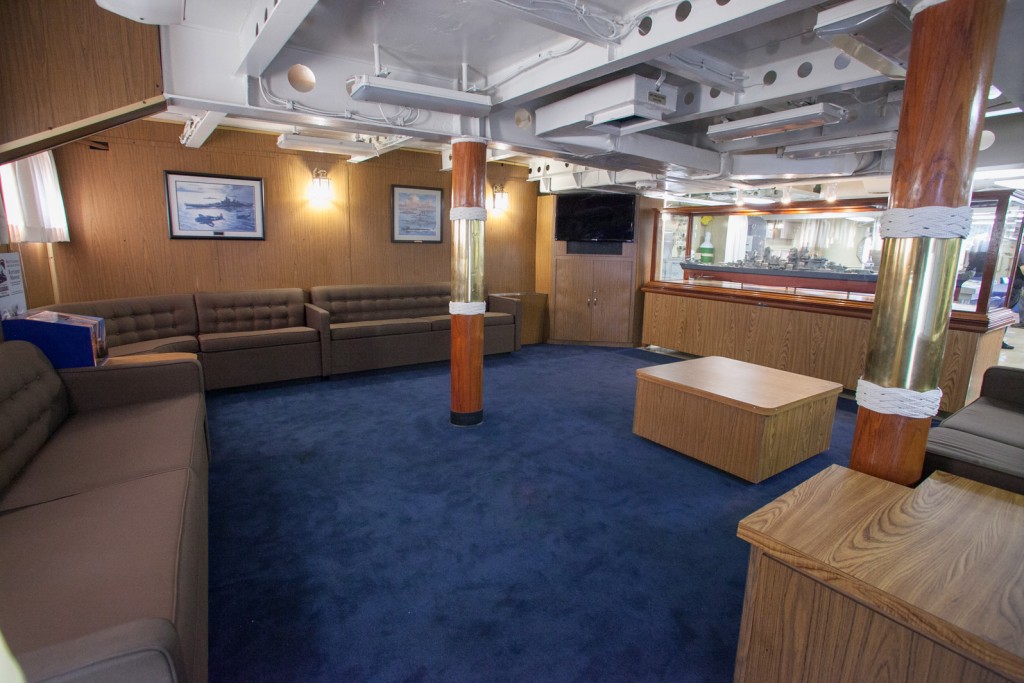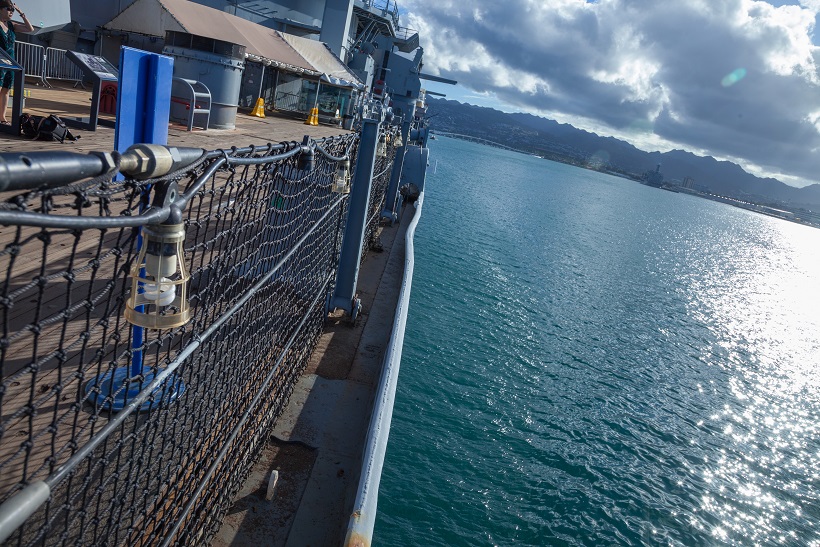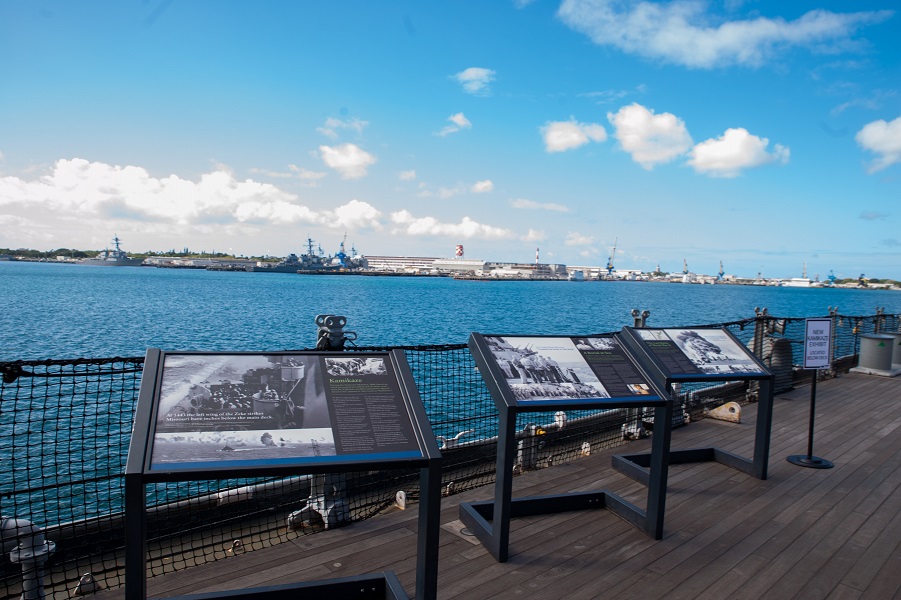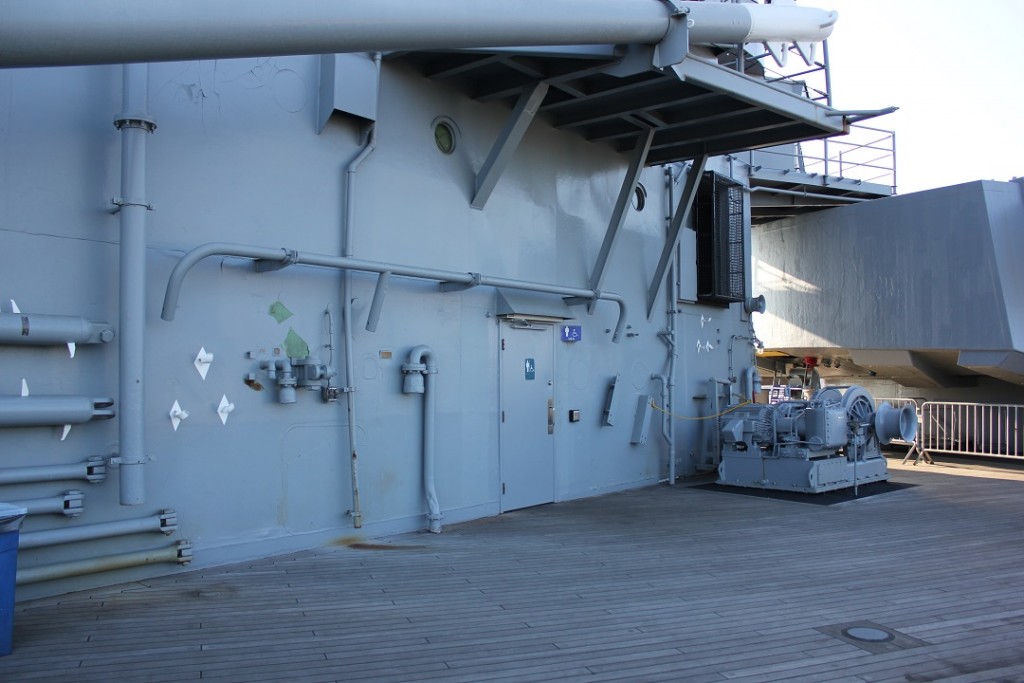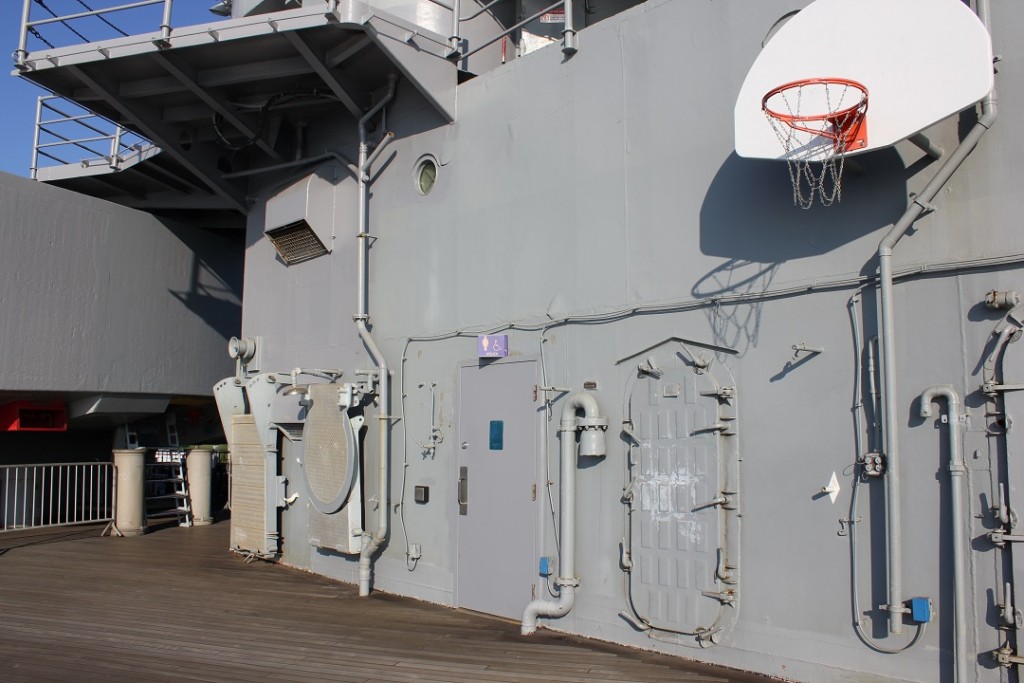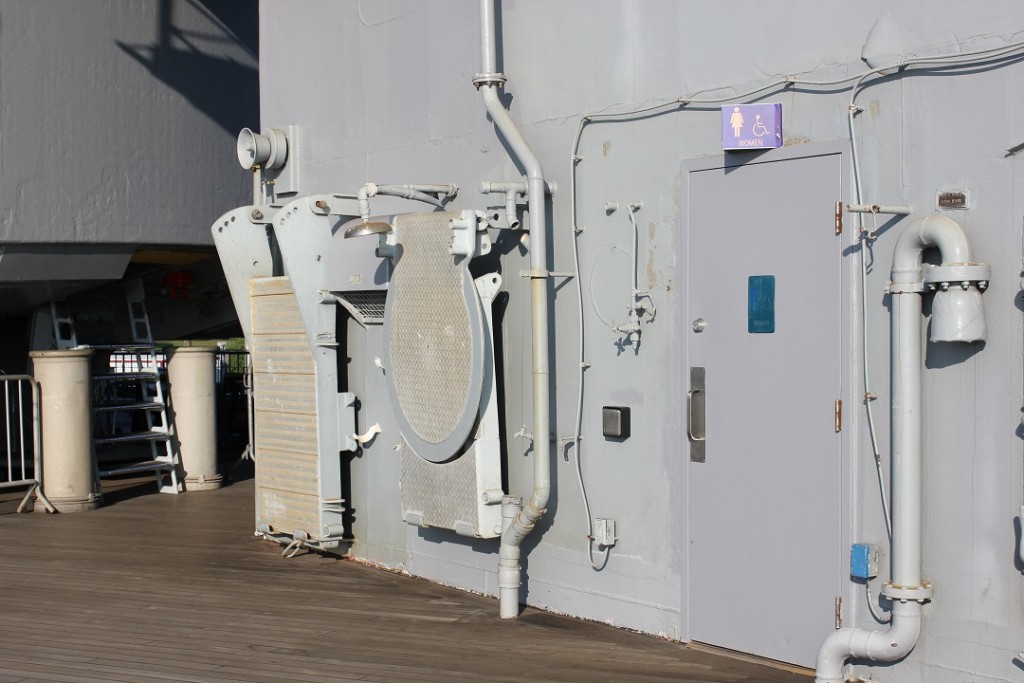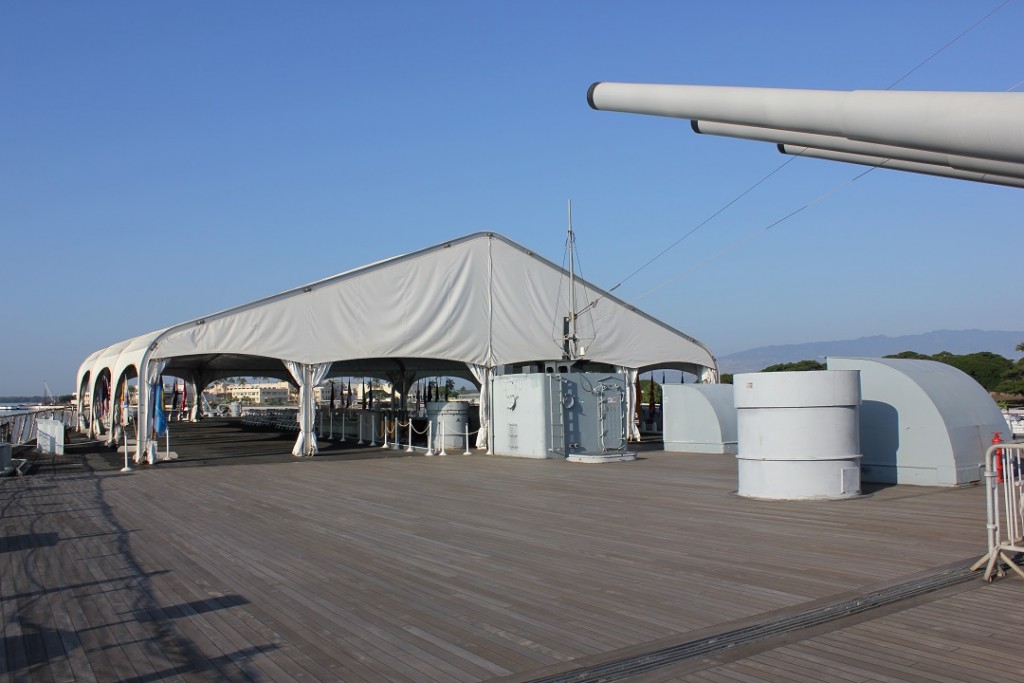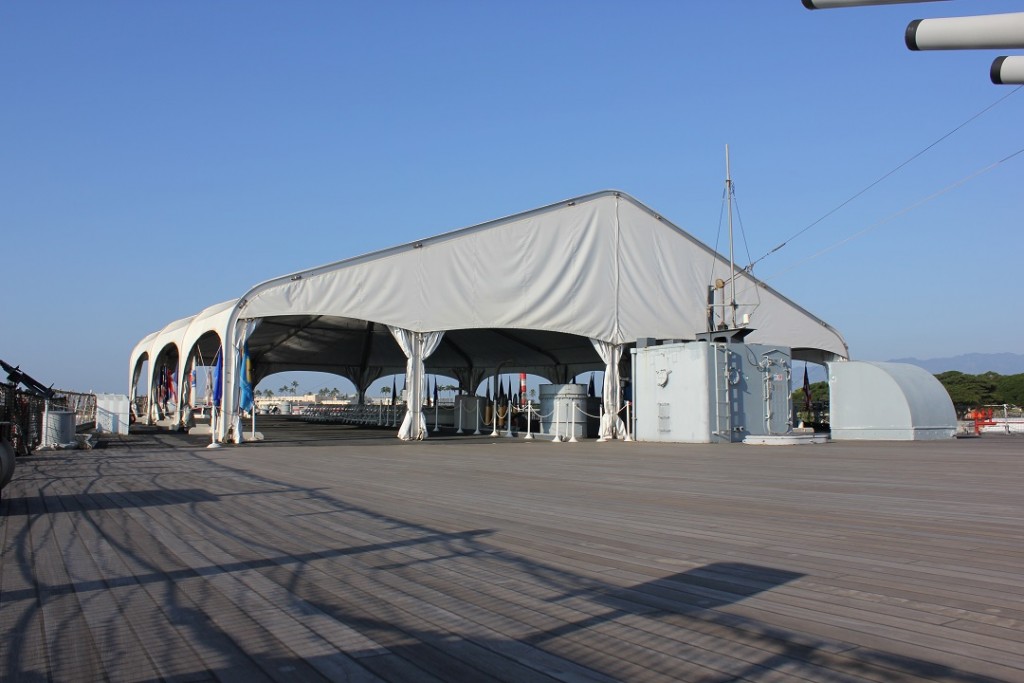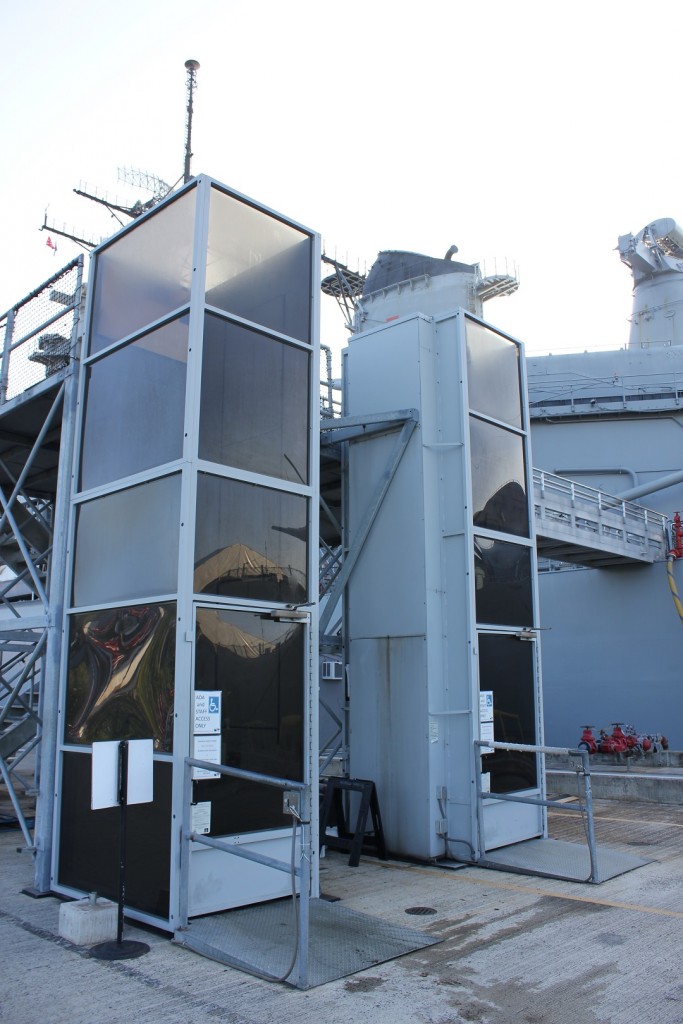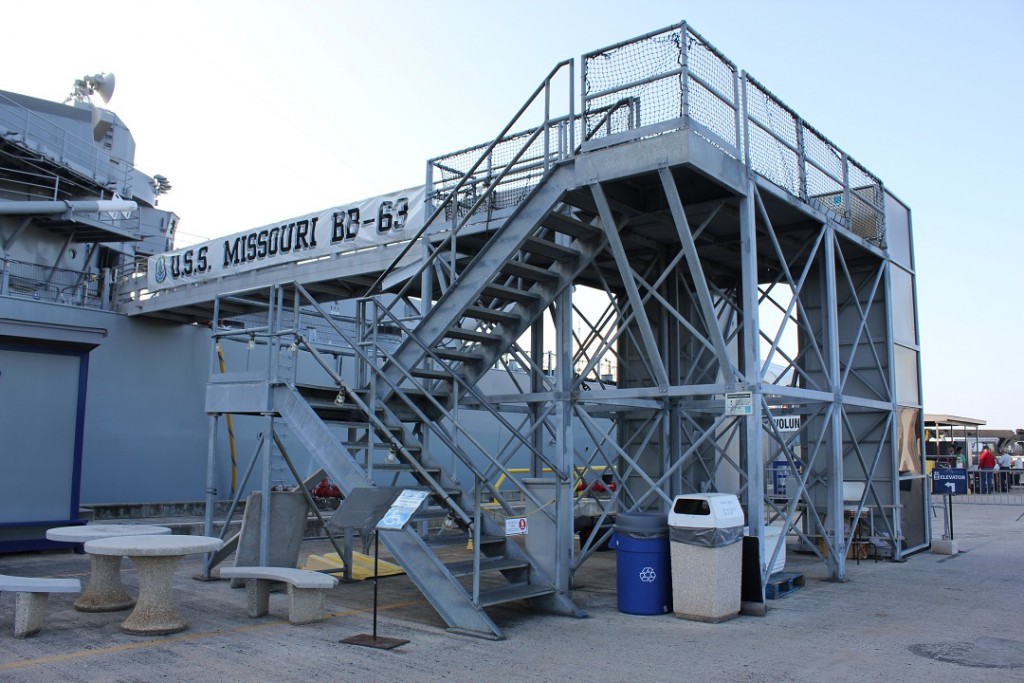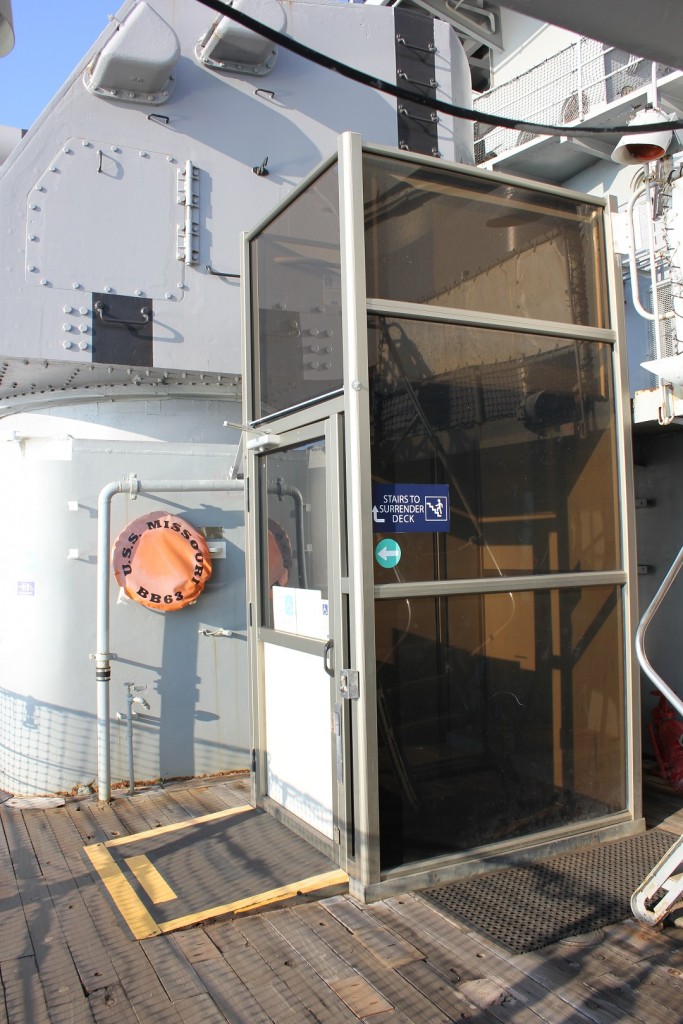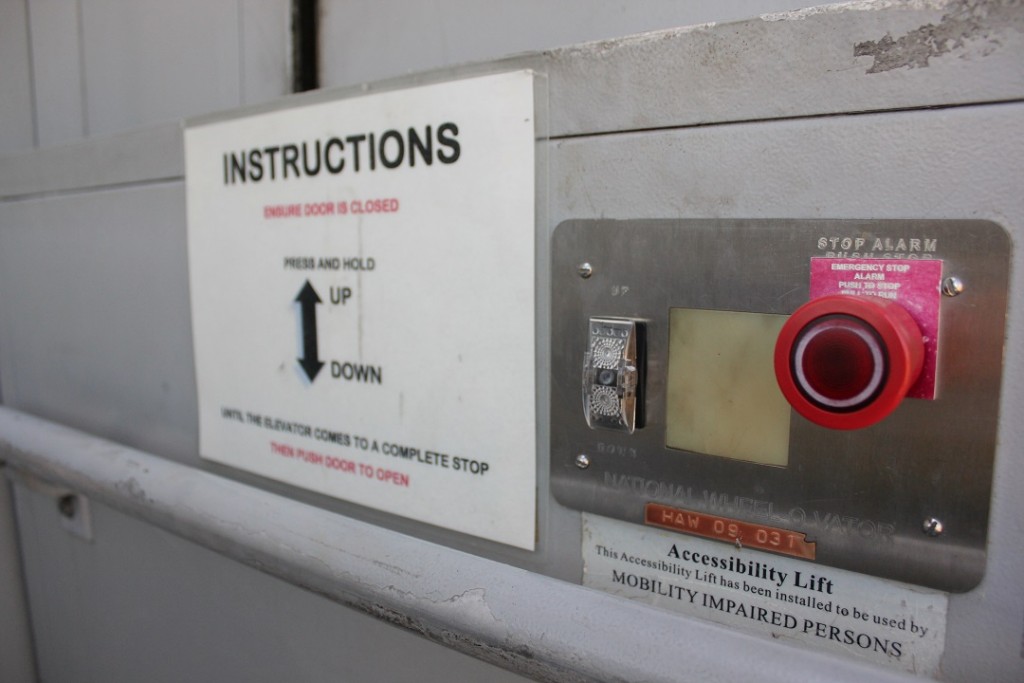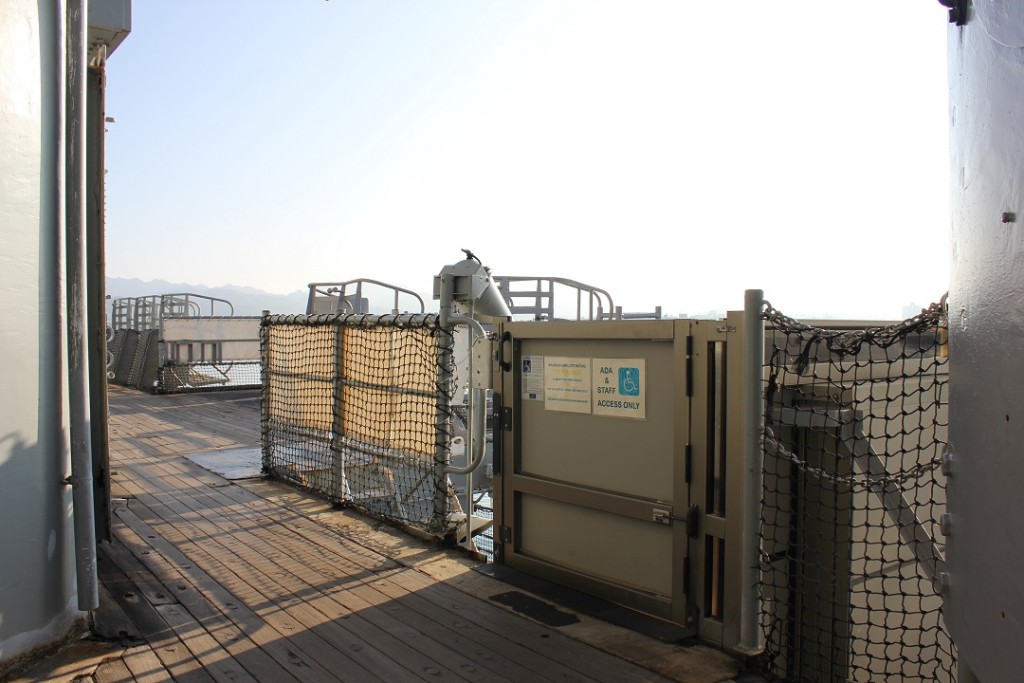Bow & Discone Antenna
Today, USS Missouri is moored facing inland, her guns raised over the USS Arizona, watching over the fallen sailors still entombed inside Arizona's hull. These two historic ships, sitting bow to bow, symbolically represent the bookends of WWII for the United States. Sunday morning, December 7, 1941 marks America’s entry into World War II following the Japanese attack on Pearl Harbor. It was also a Sunday morning, September 2, 1945, aboard the decks of the USS Missouri in Tokyo Bay when World War II ended.
The large Discone antenna on the bow of the ship was installed aboard the Missouri during the 1980s and used extensively during Operation Desert Storm in 1991. The antenna provides a link to the Navy Tactical Data System, which in turn creates a consolidated data and communication network, linking all allied air, sea, and land forces within an operational area.
DID YOU MO?: The ship has two anchors, each weighs approximately 31,000 lbs., (14,061 kg) and has 1,000 ft., (305m) of chain. Each chain link weighs a heavy 130 lbs. (59 kg).
DID YOU MO?: The Discone antenna is often referred to as a Christmas tree. During the winter holidays, sailors often decorate the antenna with lights to make it look like their own Naval Christmas tree.




